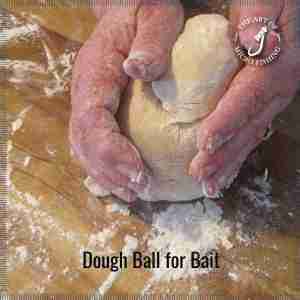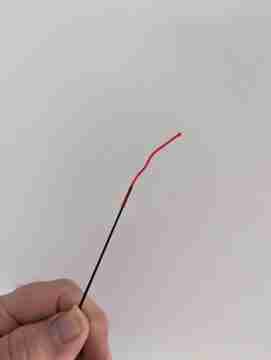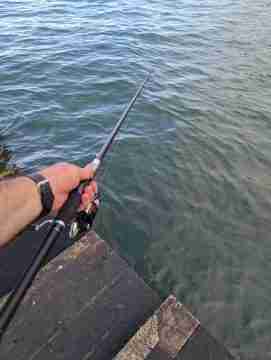Microfishing for North America’s Suckers: A Unique Angling Experience 🎣
While many anglers chase after bass, trout, and catfish, a growing community of micro fishing enthusiasts seeks a different challenge—targeting North America’s suckers. These often-overlooked fish offer a rewarding and skill-testing experience, requiring precise technique, light tackle, and a keen understanding of their feeding behavior.
Unlike traditional game fish, suckers are bottom feeders, relying on their sensitive mouths to sift through sand and gravel for food. Their subtle takes, paired with their elusive nature, make them an exciting catch for micro anglers. Whether you’re fishing by headlamp under the stars or snorkeling in clear streams, micro fishing for suckers is an experience like no other.
And to maximize your success, you’ll need the right gear. The Art of Micro Fishing (AOMF) specializes in ultra-light fishing tackle designed specifically for micro species like suckers. From #30 pre-snelled micro hooks to high-sensitivity telescopic rods, AOMF offers the best tools to help you land these unique fish.
🐟 Why Target Suckers in Micro Fishing?
Suckers may not be the most famous fish, but they offer an unparalleled experience for those who appreciate the challenge of finesse fishing.
✔️ Unique Feeding Behavior – Suckers use their specialized mouths to suction food off the bottom, requiring anglers to adjust bait presentation for a successful hookup.
✔️ Diverse Species – North America is home to a variety of suckers, each with distinct habits, habitats, and feeding preferences.
✔️ Night Fishing Thrill – Many species, including the Rustyside Sucker, are more active after dark, making headlamp fishing a prime method for catching them.
✔️ Skill-Based Catching – Their subtle takes and cautious nature demand precision, patience, and the right micro hook to land them successfully.
🎣 Ready to Catch Micro Sized Fish? Here’s the Gear You’ll Need:
✅ Micro Master Size #30 Hooks – Perfect for sunfish-sized mouths
✅ Telescopic Rod Kit – Compact & travel-friendly
✅ Ultra-Finesse Micro Floats – Detect even the tiniest nibble
📦 Order Today — Free USA Shipping!
🌎 Micro Sucker Species: Top Targets for Micro Anglers
North America is home to several sucker species that are perfect for micro fishing. Whether you’re fishing in fast-moving rivers or slow-moving creeks, these species offer a fun and rewarding experience for dedicated anglers.
1️⃣ Roanoke Hog Sucker (Hypentelium roanokense)
📍 Where? Clear, rocky-bottomed streams in the southeastern U.S.
🎣 Best Bait: Tiny worms, insect larvae, or micro doughballs.
🔎 Why Target Them? These small, bottom-dwelling fish are hard to spot and require precision casting to catch.
2️⃣ Rustyside Sucker (Thoburnia hamiltoni)
📍 Where? Gravel-bottomed creeks and headwaters of rivers with moderate currents.
🎣 Best Bait: Worm pieces, micro jigs, or soft plastics.
🔎 Why Target Them? Most active at night, making them a perfect target for headlamp micro fishing.
3️⃣ Blue Ridge Sucker (Cycleptus meridionalis)
📍 Where? Small streams and spring-fed creeks in the Appalachian region.
🎣 Best Bait: Micro dry flies, small worm pieces, or bread dough.
🔎 Why Target Them? A rare find, these tiny fish are known for their shimmering blue coloration and quick darting movements.
4️⃣ Lake Chubsucker (Erimyzon sucetta)
📍 Where? Vegetation-rich lakes, ponds, and slow-moving waters across the eastern U.S.
🎣 Best Bait: Algae-based baits, insect larvae, or small doughballs.
🔎 Why Target Them? Unlike other suckers, this species prefers calm waters and feeds by suctioning small organisms off plants.
5️⃣ Blackfin Sucker (Thoburnia atripinnis)
📍 Where? Fast-moving, rocky-bottomed streams in the Tennessee River drainage.
🎣 Best Bait: Small nymph flies, tiny worms, or insect larvae.
🔎 Why Target Them? These tiny suckers are highly sensitive to environmental changes, making them a prized catch for dedicated micro anglers.
6️⃣ Northern Bluefin Sucker (Thoburnia spilota) (NEW ADDITION ✅)
📍 Where? Small creeks and rivers in the Upper Midwest and Eastern U.S.
🎣 Best Bait: Micro nymph flies, soft plastics, or bits of red worm.
🔎 Why Target Them? These tiny suckers prefer fast-flowing waters and have a unique blueish-silver tint, making them a visually striking micro catch.
💡 Pro Tip: Using an ultra-sensitive telescopic rod helps detect light bites from these cautious feeders. Try the AOMF Telescopic Micro Rod for increased sensitivity and better control!
🎣 The Best Micro Fishing Gear for Targeting Suckers
Success in micro fishing depends heavily on having the right gear. Here’s what you need to improve your chances of catching suckers:
✔️ Micro Hooks – Use AOMF’s #30 Micro Hooks, pre-snelled onto 2 lb monofilament for effortless rigging.
✔️ Lightweight Rods – A telescopic or fixed-line rod allows for accurate bait placement in shallow waters.
✔️ Ultra-Light Line (1-2 lb test) – Ensures your bait drifts naturally without spooking cautious suckers.
✔️ Micro Floats – Helps detect subtle bites when fishing in calm water.
✔️ Headlamp for Night Fishing – Many micro sucker species feed most actively at night, making a quality headlamp essential.
🎣 Ready to Catch Micro Sized Fish? Here’s the Gear You’ll Need:
✅ Micro Master Size #30 Hooks – Perfect for sunfish-sized mouths
✅ Telescopic Rod Kit – Compact & travel-friendly
✅ Ultra-Finesse Micro Floats – Detect even the tiniest nibble
📦 Order Today — Free USA Shipping!
🎯 Mastering Micro Fishing Techniques for Suckers
1️⃣ Night Fishing with a Headlamp 🌙
Many micro suckers, especially Rustyside Suckers, become highly active after sunset. A good headlamp allows you to:
✔️ Spot fish movement in shallow water.
✔️ Carefully present bait without disturbing the fish.
✔️ Improve accuracy when fishing in tight spots.
💡 Pro Tip: Use red-light mode on your headlamp to avoid spooking fish while improving visibility.
2️⃣ Snorkel Fishing for a Close-Up View 🤿
For a completely immersive experience, try snorkel fishing in clear waters. This lets you:
✔️ Observe sucker behavior in real time.
✔️ Adjust your bait presentation based on how fish react.
✔️ Discover new fishing spots that are hard to reach from shore.
🔹 Best Gear for Snorkel Fishing:
✔️ Small split-shot weights – Keeps bait low without overloading the line.
✔️ Ultra-light hooks (#30-#26) – Perfect for delicate bites.
✔️ Bug larvae or red worms – Most effective natural bait for suckers.
3️⃣ Drifting Bait for a Natural Presentation 🌊
Since suckers feed on the bottom, using a slow-drift technique will improve your chances of getting a bite.
✔️ Use a small float or weight to keep bait in the strike zone.
✔️ Let the current move your bait naturally—avoid excessive movement.
✔️ Keep slack out of the line to detect subtle bites.
💡 AOMF Tip: Try snelling your own hooks with pre-looped leaders for easy rig changes!
🚀 Get the Best Micro Fishing Gear & Catch More Suckers!
🔹 The Art of Micro Fishing offers the best ultralight gear to help you target North America’s most unique micro species. Whether you’re fishing at night with a headlamp, snorkeling in a clear stream, or drifting bait in a slow-moving river, we’ve got you covered!
🛒 Shop Now: Best Micro Fishing Gear for Suckers
📦 Fast Shipping – Order Yours Today!
🎯 Designed for Micro Anglers, by Micro Anglers!
🌊 Why Sucker Micro Fishing is Worth the Challenge
Micro fishing for suckers is a truly unique experience, blending skill, patience, and excitement. Whether you’re:
✔️ Targeting rare species like the Roanoke Hog Sucker
✔️ Using a headlamp for nocturnal micro fishing
✔️ Snorkel fishing to observe fish behavior up close
There’s always a new adventure waiting beneath the water’s surface.
🎣 Gear up with AOMF and start micro fishing today! 🚀
Know the Rules Before You Fish 🎣
Before targeting any sucker species—or any fish for that matter—it’s crucial to check both state and federal regulations regarding their conservation status. Some species, like the Rustyside Sucker, are protected in certain states even if they are not endangered everywhere. Others, like the Lake Chubsucker, may have different classifications depending on the region. Many native fish populations face threats due to habitat destruction and environmental changes, so always verify local fishing laws before heading out. You can check your state’s Department of Natural Resources (DNR) website or the U.S. Fish and Wildlife Service for up-to-date information on protected species and any special permits required for catch-and-release micro fishing.
🎣 Ready to Catch Micro Sized Fish? Here’s the Gear You’ll Need:
✅ Micro Master Size #30 Hooks – Perfect for sunfish-sized mouths
✅ Telescopic Rod Kit – Compact & travel-friendly
✅ Ultra-Finesse Micro Floats – Detect even the tiniest nibble
📦 Order Today — Free USA Shipping!






